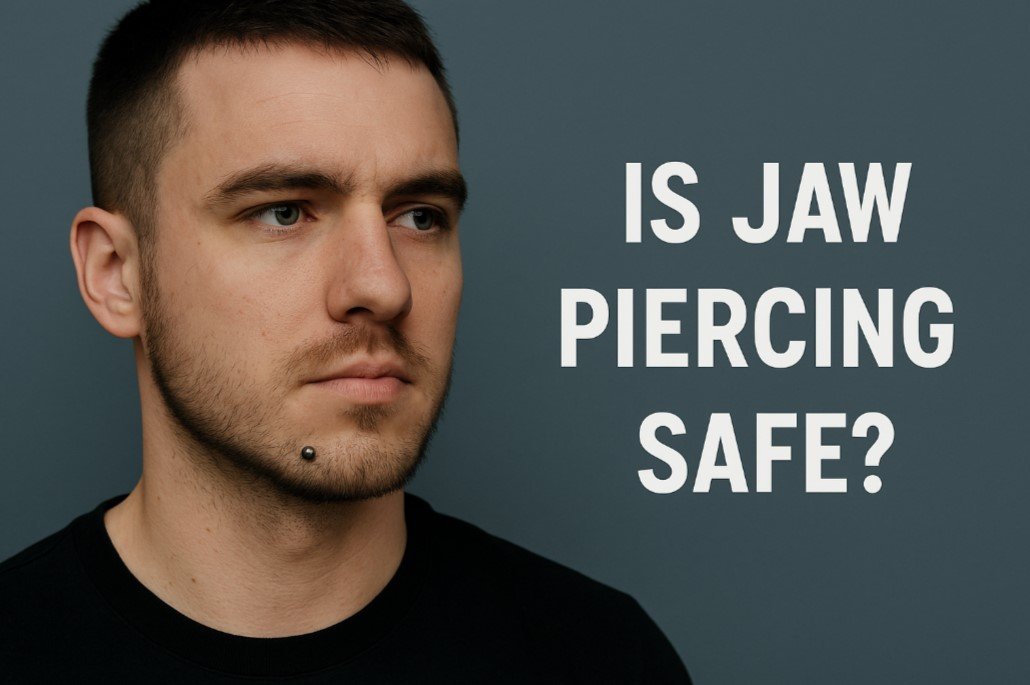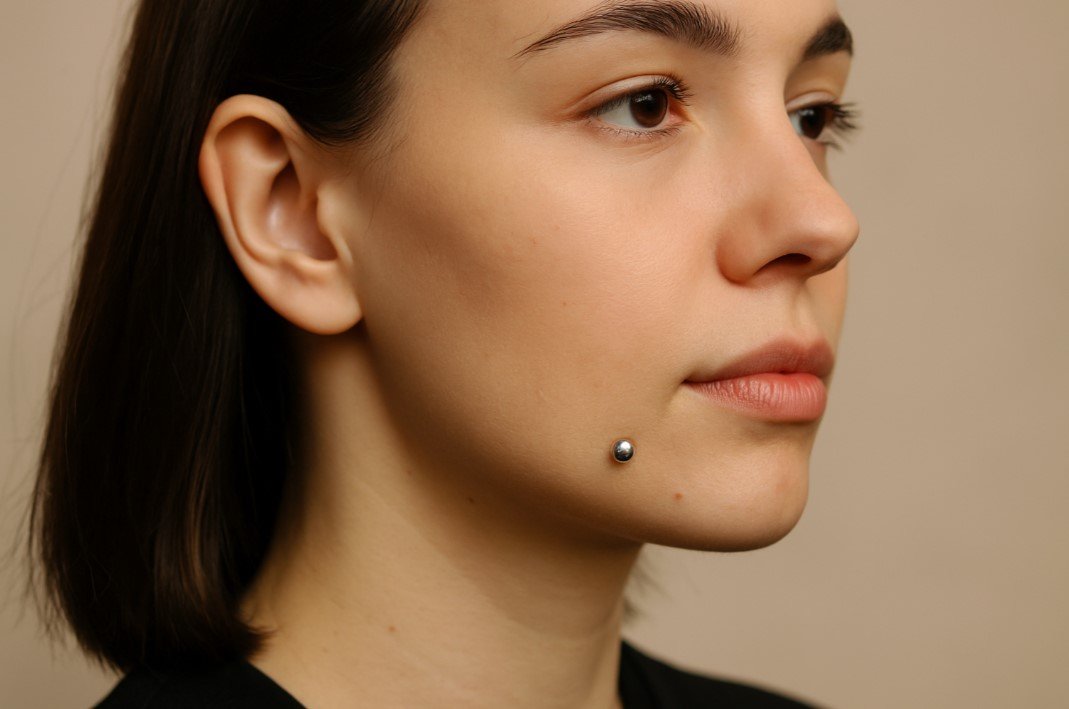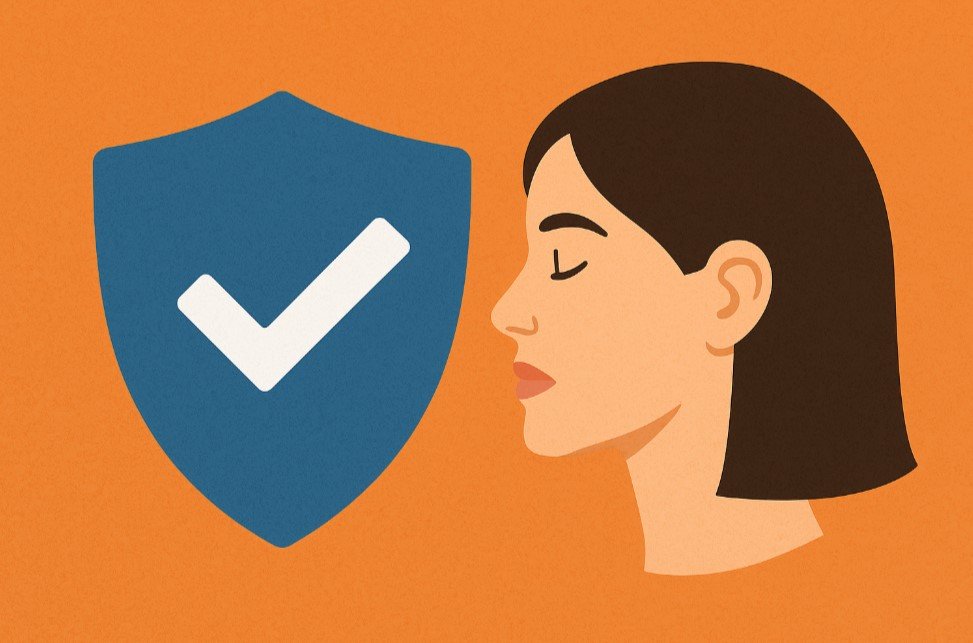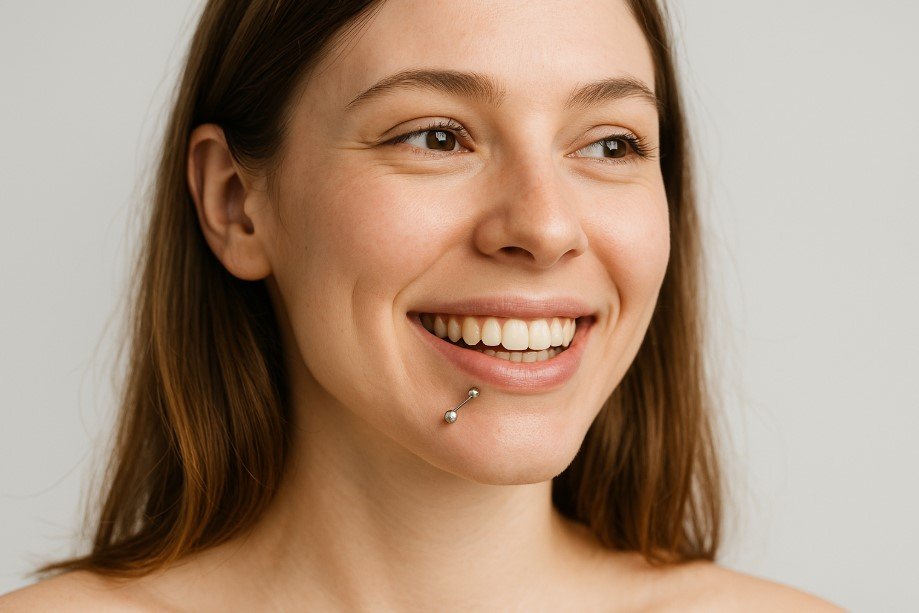Lifestyle
Is Jaw Piercing Safe? Pros, Cons, and Aftercare

Jaw piercing is one of the more unusual body modifications out there. While ear, nose, and even lip piercings are fairly common, a jaw piercing often makes people raise their eyebrows and ask, “Wait, is that even real?” Yes, it is real, and yes, people actually get it done. But the question is—is it safe?
This article breaks down everything you need to know about jaw piercing: how it works, what risks are involved, what the pros and cons are, and how to take care of it if you decide to go for it. We’ll also throw in some facts and a bit of humour—because let’s face it, if you’re getting a hole in your jaw, you deserve a few laughs.
What is a Jaw Piercing?

A jaw piercing typically refers to a piercing that goes through or near the jawline, usually at the lower corners of the face. This is not to be confused with cheek piercings or lower lip piercings like snake bites. A true jaw piercing is often placed in or below the mandibular area (that’s the lower part of your jawbone if you skipped anatomy class).
Most jaw piercings are surface piercings, which means the jewellery sits just under the skin, not through like a traditional earlobe piercing. Others may be dermal piercings—where a small anchor is placed under the skin with a piece of jewellery on top.
Either way, it’s not something you see every day, and it’s definitely not something to try at home with a needle and a mirror. Please don’t.
Is It Safe?

Let’s get to the big question—how safe is jaw piercing? The answer is: it can be safe, but only if done by a professional under clean, sterile conditions and with proper aftercare. Like any body modification, there are risks, but with the right precautions, most of those risks can be minimized.
Here are the main safety factors to consider:
- Placement: Piercing near the jaw involves nerves, muscles, and a good amount of movement. If it’s not placed correctly, it can lead to complications like nerve damage or migration.
- Cleanliness: Any piercing is an open wound. If it’s not kept clean, bacteria can enter and cause infection.
- Jewellery material: Cheap or low-quality jewellery can cause allergic reactions or irritation. Surgical-grade stainless steel, titanium, or biocompatible materials are your best options.
- Experience of the piercer: This is not your average ear piercing. Make sure the person performing it is experienced in surface or dermal piercings and knows the anatomy of the face.
In short, jaw piercing is safe if done right, but not without risk.
Pros of Jaw Piercing
If you’re considering getting a jaw piercing, here are some of the potential benefits:
- Unique Appearance
Let’s be honest, jaw piercings look pretty cool—if you’re into edgy, non-mainstream aesthetics. It’s a conversation starter and definitely stands out. - Express Yourself
Body modifications are often a way for people to express their identity, style, or personal meaning. A jaw piercing can be part of that journey. - Minimal Pain for Some People
Surprisingly, many people say the pain level is manageable. On a scale of 1 to 10, it often scores around a 4 to 6, depending on your pain tolerance and the placement. - Surface Piercings Are Temporary
If you choose a surface piercing rather than a dermal anchor, you can usually remove it with minimal scarring. It gives you the option to try something bold without making a lifelong commitment. - Healing Time Is Moderate
Surface piercings on the jaw typically take 6 to 12 weeks to heal, which is faster than some cartilage piercings.
Cons of Jaw Piercing
Now for the less glamorous side. Here are the downsides to think about before getting that shiny stud near your jawline:
- Risk of Infection
Your jaw moves a lot when talking, eating, or yawning. That means the piercing is constantly exposed to bacteria and motion, which can increase the risk of infection. - Possible Rejection or Migration
Surface piercings are known for rejection, where the body pushes the jewellery out over time. Migration is when the piercing moves slightly from its original position. - Swelling and Bruising
Jaw piercings may swell more than others due to facial muscle activity. It’s not unusual to look like you’ve been in a minor boxing match for a few days. - Limited Professional Acceptance
Let’s just say that not every employer is thrilled about visible jaw jewellery. If you work in a conservative industry, you may need to remove or cover it. - Complications from DIY or Unskilled Work
Unfortunately, there are people who try to pierce themselves or go to underqualified piercers. This increases the risk of everything from crooked placement to serious infections. Don’t be that person.
Aftercare Tips

So you got your jaw pierced. Now what? Aftercare is the key to preventing complications and enjoying your new look. Follow these tips:
- Clean Gently Twice a Day
Use a sterile saline solution or a sea salt soak. Avoid alcohol or hydrogen peroxide—they’re too harsh and can damage tissue. - Avoid Touching
Your hands carry bacteria, so resist the urge to poke, twist, or fiddle with the jewellery. It’s not a stress ball. - Be Careful When Eating or Sleeping
Try not to sleep on the side of the piercing. Also, chew slowly and carefully for the first few days to avoid aggravating the area. - Skip the Makeup (Temporarily)
Avoid applying foundation or powder near the piercing while it’s healing. Makeup can clog the area and lead to infection. - Watch for Warning Signs
If you notice redness, pus, fever, or sharp pain that doesn’t improve after a few days, it’s time to visit a doctor or professional piercer. - Don’t Change the Jewellery Too Soon
Wait at least 8 to 10 weeks before swapping out the jewellery. Even if it looks healed on the outside, the inside could still be sensitive.
Some Quick Facts About Jaw Piercings
Jaw piercings are considered advanced and are not commonly offered at all piercing studios.
- The average cost ranges from $70 to $150, depending on the studio and jewellery.
- Not every face shape is ideal for a jaw piercing. Placement depends on muscle structure and skin tension.
- They can leave a small scar if removed, but proper healing minimizes this.
Should You Get One?
If you’re confident, prepared, and want something that really makes you stand out, a jaw piercing might be right for you. Just make sure you go to a certified piercer who knows what they’re doing. Don’t base your decision on a TikTok trend or a friend who once pierced their own ear with a safety pin.
Ask yourself these questions:
- Can I commit to proper aftercare?
- Will it affect my job or lifestyle?
- Am I okay with the possibility of scars or removal?
If you answered “yes” to all three, go for it. If not, maybe wait a bit—or try a less intense piercing first.
Final Thoughts
Jaw piercing is obviously not for everyone, but it’s a bold way to express your individuality. It’s safe when done by professionals and when you follow the right aftercare. Like any body modification, it comes with both pros and cons. If you’re thinking of joining the small but growing group of people with jaw piercings, do your research, plan ahead, and maybe stock up on soft food for those first few days.
And remember, while the piercing might be temporary, that photo on your driver’s license will last at least a few years—so make sure it’s a good one.
Before you commit to any extreme body modification, it’s important to be fully informed. For more insight on the dangers and healing difficulties of jaw-related piercings, check out our detailed guide on mandible piercings.
-

 Business2 months ago
Business2 months agoTech Capital One: Careers, Jobs, and Opportunities
-

 Digital Marketing2 months ago
Digital Marketing2 months agoHow Embedded Payments Are Turning Apps Into Revenue Engines
-

 Tech1 month ago
Tech1 month agoSora 2 Invite Code: How to Get One (Step-by-Step Guide)
-

 Real Estate2 months ago
Real Estate2 months agoDigital Tools That Are Changing the Way We Relocate






